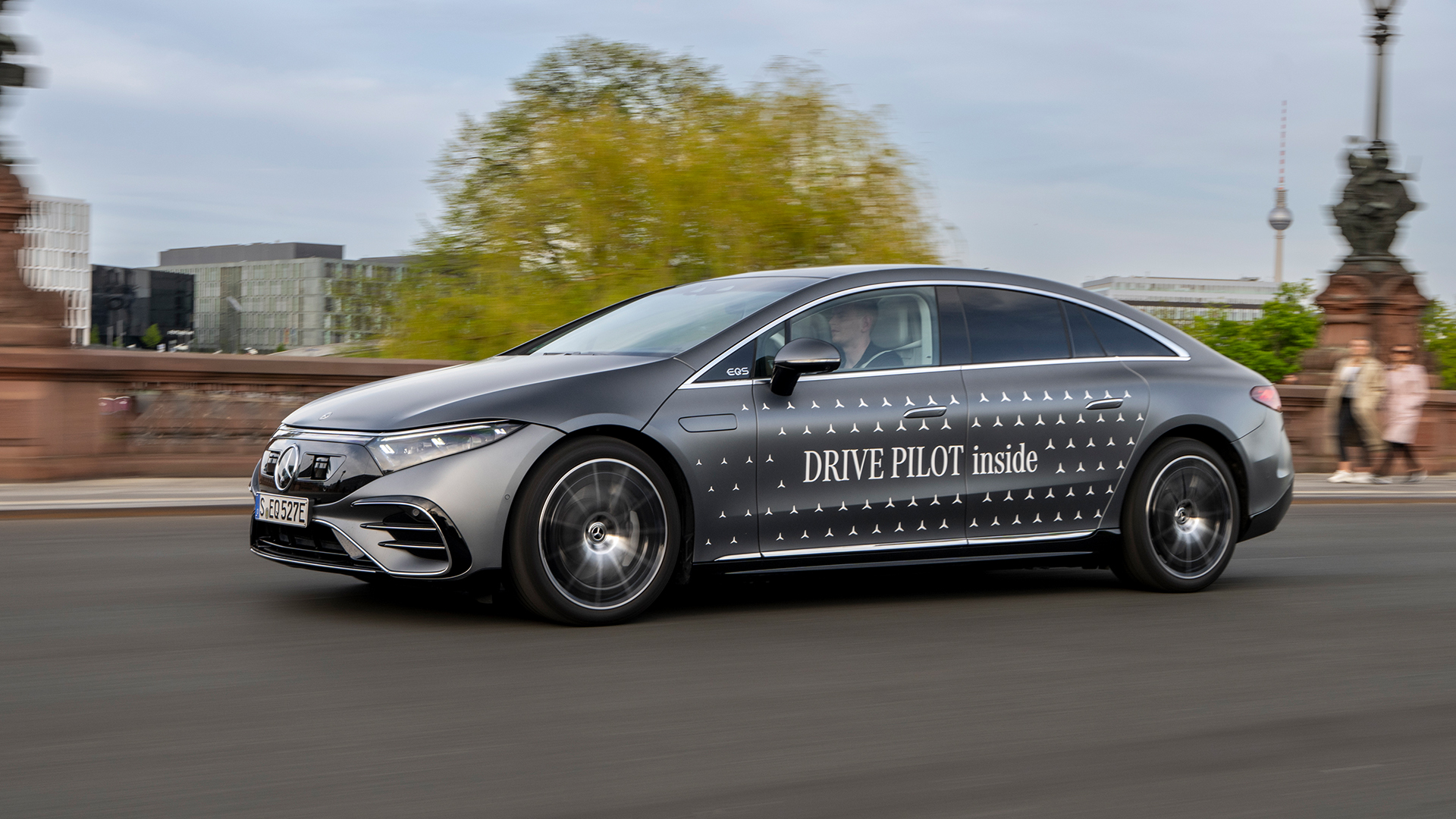

Mercedes-Benz will be the first automaker to launch a Level 3 automated driving system in the United States. The news comes as part of a series of announcements made by Mercedes at the 2023 Consumer Electronics Show in Las Vegas, noting that it has received official approval from the Nevada Department of Transportation to operate its Drive Pilot system on state roads. It expects to receive its formal certification within two weeks.
In addition to Nevada, Mercedes has also applied for similar permissions in California, though it has not yet received approval. The automaker is optimistic that it will in time.

Level 3 driving assistance is defined by the SAE as a conditional hands-free automated driving system, meaning that the person behind the wheel is not actually driving while the system is engaged. However, the vehicle may request that the driver take over if certain driving conditions aren’t met, unlike Level 4 and 5 which will not prompt the driver to take over once the system is engaged in its operational design domain.
Mercedes’ selling point for Drive Pilot is to enable its customers to reclaim their time while in the vehicle. Specifically, the automaker says it will allow drivers to “focus on certain secondary activities such as communicating with colleagues via In-Car Office, browsing the web or relaxing while watching a movie.” It’s unclear just how much time drivers will get back, or where the system will be used, as Drive Pilot is currently limited to just 37 miles per hour elsewhere in the world.
The idea behind Drive Pilot isn’t unique to Mercedes. Many automakers are working to build hands-free driving into their vehicles, though some have backed down on old promises. That said, Mercedes is the first automaker to receive such approval in the U.S., beating out names like Tesla, General Motors, Ford, and even Honda. The auto giant holds the title as the first automaker to put out a production vehicle with Level 3 autonomy in its Japan-only Honda Legend sedan.
It’s important to note that while Nevada regulates autonomy on its roads, it does not certify individual vehicles or systems, nor does it grant specific approval based on what SAE-defined autonomy level a vehicle is claimed to fall under. Instead, the DOT requires the automaker to self-certify its systems and verify that its safety systems meet specific requirements.
“Mercedes has certified that their technology meets the Nevada ‘minimal risk condition’ requirement that requires a Level 3 or higher ‘fully autonomous’ vehicles to be able to stop if there is a malfunction in the system,” said the Nevada DOT.

In case you’re not yet ready for a Level 3 system (or live somewhere where it’s not yet approved), Mercedes says that its Level 2 driver assistance system will also gain Automatic Lane Change functionality in North America. While this won’t quite be the same as taking your hands off the wheel, the vehicle will automatically initiate lane changes if it approaches a slower car while adaptive cruise control is enabled. And yes, it will return back to its original lane once it passes to avoid being a left-lane log.
Got a tip or question for the author? Contact them directly: rob@thedrive.com